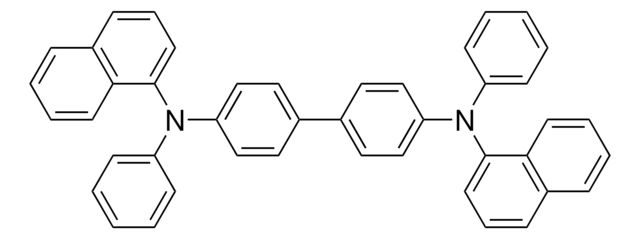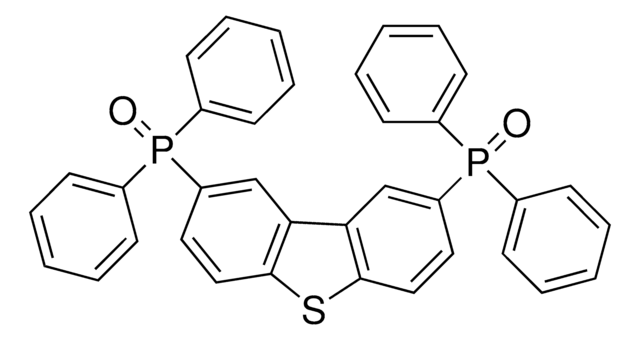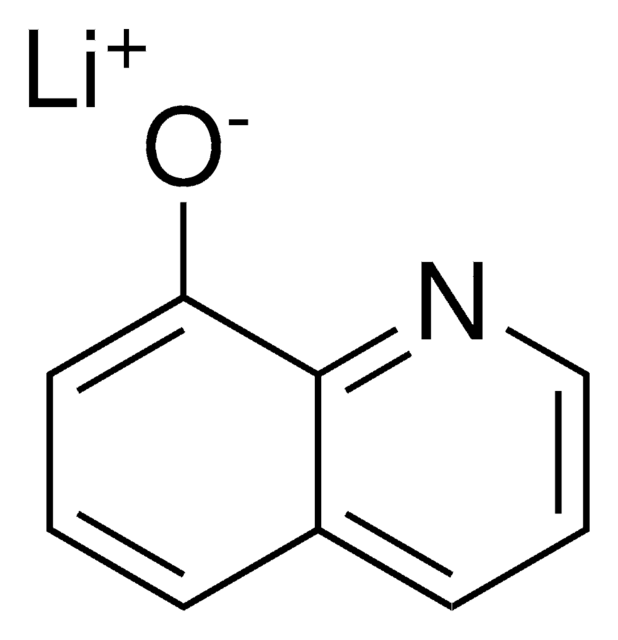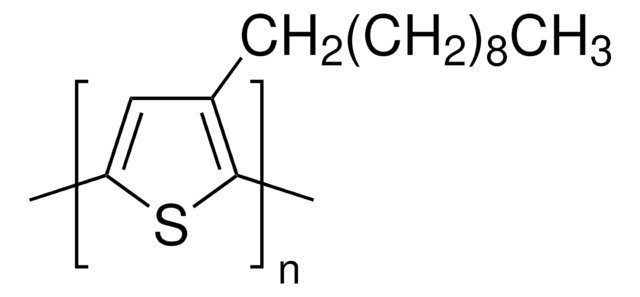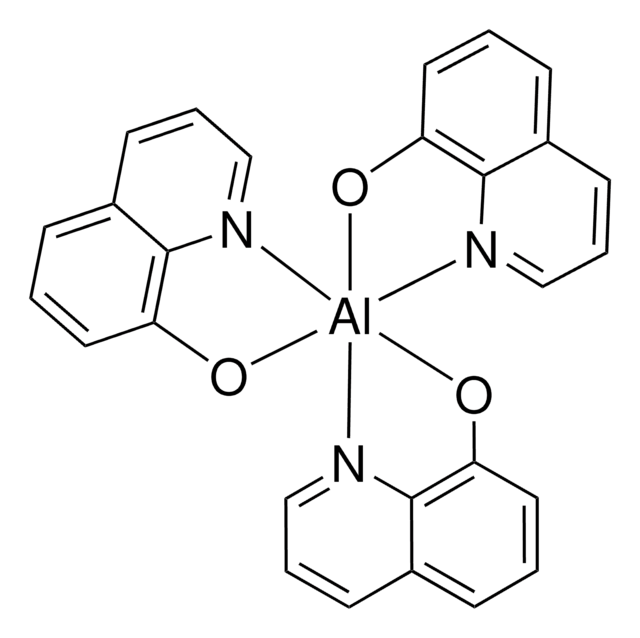765015
2,2′-Dimethyl-N,N′-di-[(1-naphthyl)-N,N′-diphenyl]-1,1′-biphenyl-4,4′-diamine
97% (HPLC)
別名:
α-NPD, N,N′-Bis(naphthalen-1-yl)-N,N′-bis(phenyl)-2,2′-dimethylbenzidine
About This Item
おすすめの製品
アッセイ
97% (HPLC)
フォーム
solid
mp
247-252 °C
λmax
306 nm in THF
SMILES記法
Cc1cc(ccc1-c2ccc(cc2C)N(c3ccccc3)c4cccc5ccccc45)N(c6ccccc6)c7cccc8ccccc78
InChI
1S/C46H36N2/c1-33-31-39(47(37-19-5-3-6-20-37)45-25-13-17-35-15-9-11-23-43(35)45)27-29-41(33)42-30-28-40(32-34(42)2)48(38-21-7-4-8-22-38)46-26-14-18-36-16-10-12-24-44(36)46/h3-32H,1-2H3
InChI Key
ZJFKMIYGRJGWIB-UHFFFAOYSA-N
類似した製品をお探しですか? 訪問 製品比較ガイド
詳細
アプリケーション
保管分類コード
11 - Combustible Solids
WGK
WGK 3
引火点(°F)
Not applicable
引火点(℃)
Not applicable
適用法令
試験研究用途を考慮した関連法令を主に挙げております。化学物質以外については、一部の情報のみ提供しています。 製品を安全かつ合法的に使用することは、使用者の義務です。最新情報により修正される場合があります。WEBの反映には時間を要することがあるため、適宜SDSをご参照ください。
Jan Code
765015-5G:
765015-VAR:
765015-BULK:
最新バージョンのいずれかを選択してください:
資料
The conductivity of organic semiconductors can be increased, and the barriers to charge-carrier injection from other materials can be reduced, by the use of highly reducing or oxidizing species to n- or p-dope, respectively, the semiconductor.
The conductivity of organic semiconductors can be increased, and the barriers to charge-carrier injection from other materials can be reduced, by the use of highly reducing or oxidizing species to n- or p-dope, respectively, the semiconductor.
ライフサイエンス、有機合成、材料科学、クロマトグラフィー、分析など、あらゆる分野の研究に経験のあるメンバーがおります。.
製品に関するお問い合わせはこちら(テクニカルサービス)